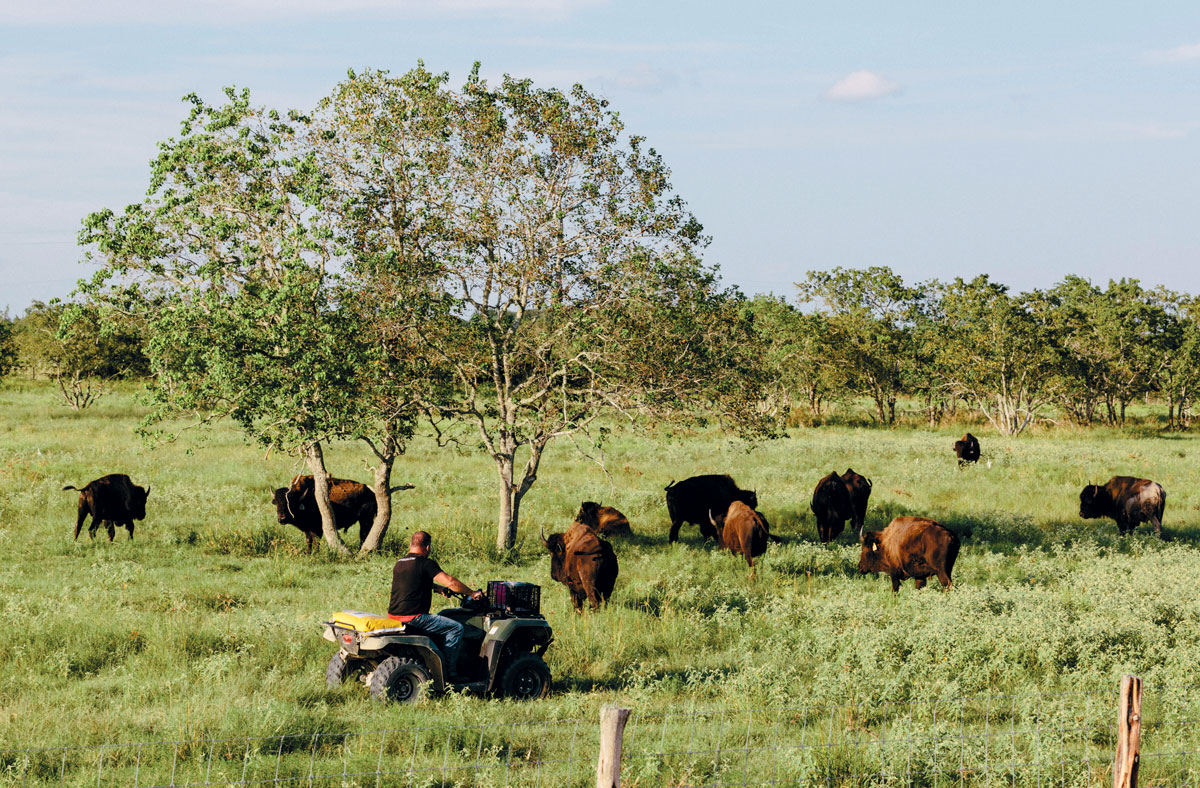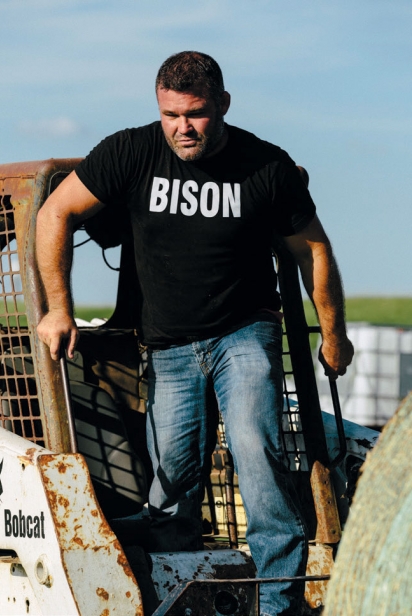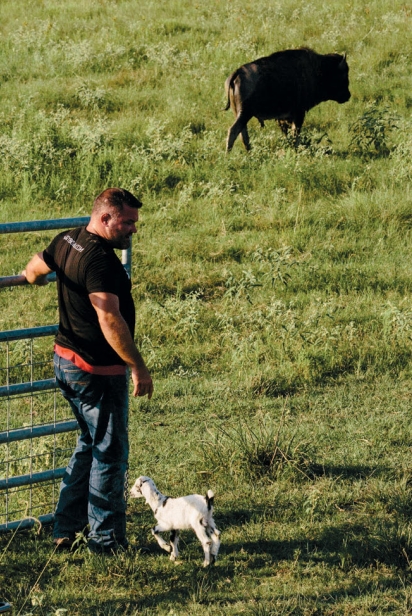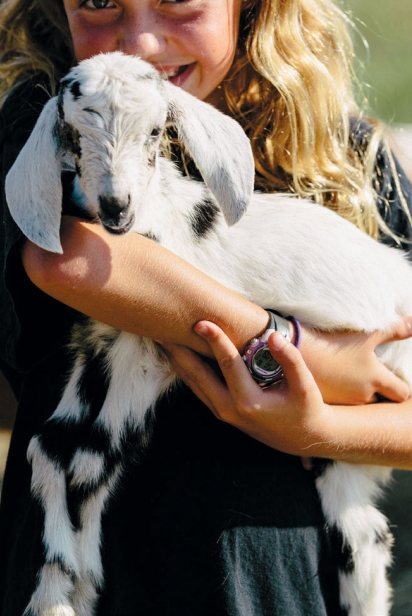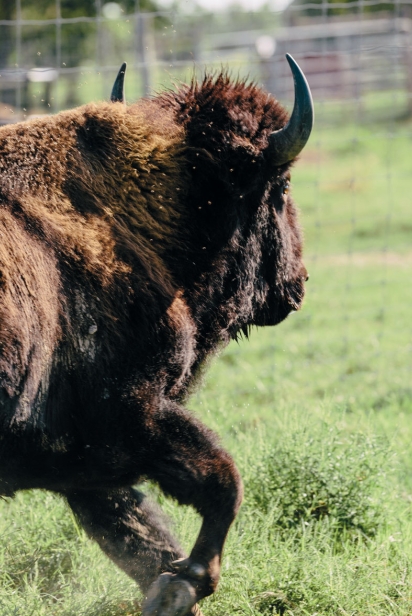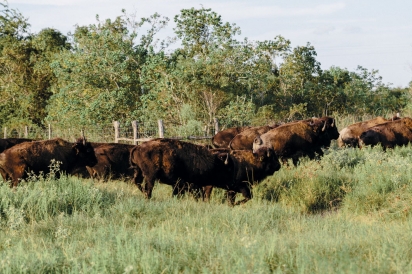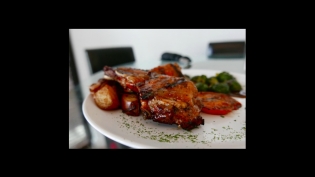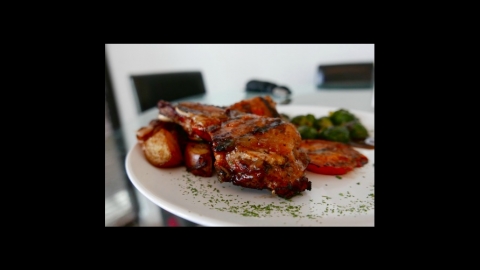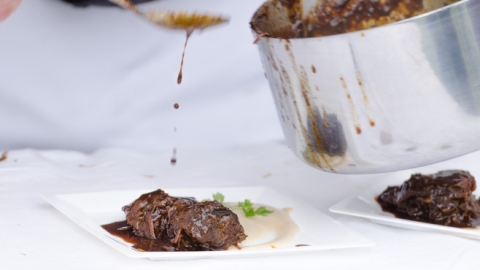Supermeat on the Prairie
Sustainable bison, goat, boar and more make the cut at Katerra Exotics
As we near the end of the year, our thoughts inevitably turn to holiday meals. Those festive meals evoke warmth and comfort, a hint of stress and maybe even a pinch of boredom with the same old turkey or beef that grace our tables year after year. But boring doesn’t need to be part of your holiday feast this year if you’re willing to try something a little different.
A rack of venison, a whole roasted goat or a bison roast would make good festive dishes, says Patrick Bierschwale, who produces bison and other not-so-common meats at Katerra Exotics. His favorite, the hump roast, comes off the bison’s hump: “It’s nice and fatty like brisket but not as tough.”
Meats like bison, venison, goat and boar aren’t an easy sell but as more people seek healthier, sustainable meats they make tasty alternatives to the traditional. Bison meat in particular is enjoying a growing popularity.
Once a dominant figure on the North American plains and a staple of the Native American diet, bison was nearly wiped out by westward expansion in the 1880s. At the turn of the century, some 1,000 bison were all that remained in North America, down from an estimated population of 30 to 60 million in the 1600s. Fortunately for us, preservation efforts saved the animal and today demand for its meat is helping it make a strong comeback. According to the National Bison Association (NBA), retail and restaurant sales of bison meat in the U.S. top $340 million per year. Bison also gained visibility when Congress designated it the national mammal this April. The animal was also included in Slow Food’s Ark of Taste, a catalog of culturally significant foods that face extinction.
“I would get a lot more weird looks when I first started—I still get ’em,” said Bierschwale. “People still are conditioned to beef, but [bison] is definitely becoming more and more popular.”
The “Super” Meat
Katerra Exotics got its start back in the 1980s when Bierschwale’s grandfather, Roy, bought his first herd of bison. He and Bierschwale’s father, Pat, both ranched as a hobby but it wasn’t until after Bierschwale finished college and spent some time in the workforce that he realized there was a business in selling bison meat.
Bison’s appeal can be attributed to several factors: its flavor, nutritional benefits and sustainability. Compared to beef, bison meat has fewer calories, less fat and less cholesterol per ounce. It also packs more protein, iron and B vitamins.
“It’s the superfood of the meats,” says Bierschwale. Its flavor is comparable to beef, albeit richer and slightly sweet. Bierschwale says if you don’t know you’re eating bison, you’ll easily think you’re eating really good beef.
At Season’s Harvest in Cypress, owner Becket Griffith uses Katerra’s bison in burgers, meatloaf and roasts. While some people find it dry, Griffith says the key is in the preparation. Eric Aldis, chef partner at Agave Rio, Midtown Barbecue and Bonchon Korean, also serves Katerra’s bison at Agave Rio. “We prefer bison over beef just from the simple fact that it’s better for you. At the same time, I keep saying it’s delicious,” he said. Aldis says cuts such as bison rib eye and strips are incredibly tender and eat better than beef.
A Slow Food
Katerra’s breeding herd numbers at about 100 bison and lives on a 3,000-acre ranch in Frio Canyon, outside of Leakey in Texas Hill Country. Every year, the calves are brought to Katerra’s Katy ranch to be weaned. The Katy ranch is also home to Bierschwale; his wife, Andrea, and their four kids; Bierschwale’s parents; and sister (the vet-in-residence) and her family. There, the majestic bison with their prominent humps and long, shaggy hair roam and graze freely around the property until they’re ready for processing at 2 to 3 years of age.
Raising bison requires patience. The animals take twice as long to grow as beef cattle and federal law prohibits the use of growth hormones on bison to speed up its growth. The NBA also prohibits the use of antibiotics except in case of illness. Not that the Katerra would want it any other way. “We think bison is perfect the way it is, the way it always has been, and that’s the way we’re going to keep it,” says Bierschwale. “We’re not trying to raise beef.”
Bison’s slower growth—and to a lesser extent the facilities and space needed to raise them—accounts for the higher price of its meat. A whole tenderloin from Katerra runs for about $200 while the bison filets go for $50 per pound. Even at the high price, filets sell out the first weekend Bierschwale has them for sale. The demand is there. When he started selling bison meat at farmers markets in 2013, Bierschwale was selling one animal every two months. Today he processes three animals per month and would do more if his herd were capable of producing more.
Precisely because there’s a limit to how much meat his herd can produce, Bierschwale added goat, lamb, wild boar and venison to his offerings. At Off The Vine Bistro in Missouri City, chef owner Namita Asthana buys much of her meat—bison, boar, lamb and beef—from Katerra. For a South African–themed dinner in September, she served grilled wild boar chops seasoned with powdered green mango and spices, topped with a bourbon vanilla sauce. Flavorwise it was hard to distinguish the boar from pork with the advantage that boar is leaner. Still, people are wary of buying these other meats. With boar meat, for instance, people have the misconception that it’s dirty.
Bierschwale is aware that not everyone is going to be interested in the “fringe meats” he raises. In September, he opened a store in Old Katy where he sells pastured and grass-fed meats as well as other locally grown and raised foods. He envisioned it as a farmers market in a store. To supply it, he added less-exotic meats, raising chickens at his ranch and selling grass-fed beef and pastured pork that he buys from another ranch.
“I’m trying to be as accessible [as possible] to the general public. That’s what made me diversify, because not everyone is going to want to have bison, so I have a little bit of everything,” he said.
This holiday, though, consider going beyond the staples and including bison or other less common meats in your menus. You may just find yourself ditching the turkey for good.
Get Down To Cooking
Here are some considerations for cooking bison and other wild meats.
Go low and slow: The overarching advice about cooking bison and other wild meats is to not overcook it. It sounds like a no-brainer but because these meats are leaner, they have to be handled gently and with care. “Any kind of leaner meat, wild game or bison tends to get a little bit dry and not as texturally satisfying above a medium rare,” said Aldis. Cooking methods will vary depending on the cut of meat but go easy on it. For bison roasts and steaks, braising or other moist cooking methods are ideal. For thinner cuts, quick-cooking methods such as broiling or pan-searing work well.
Substitute bison for beef in your favorite beef recipes: Not sure what to cook? Bison can easily be substituted for beef in most recipes so don’t be afraid to try it out. Again, just make sure to adjust to lower temperatures and slower cooking times to avoid drying out the meat.
Try sous vide: Off The Vine’s Asthana recommends cooking cuts such as boar chops or ribs using sous vide. Sous vide is a method of cooking food in sealed airtight plastic bags, which are immersed in a water bath maintained at a controlled temperature over a long period of time. It ensures that foods are cooked evenly. If you don’t own a sous vide machine, try marinating the chops in lemon juice and yogurt. “It breaks down some of the tissues,” says Asthana.
> Find Katerra Exotics weekly at the Rice University, Westchase, Memorial Villages and Eastside farmers markets or visit their new store at 5627 3rd St. in Katy.


